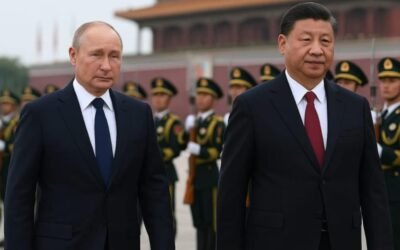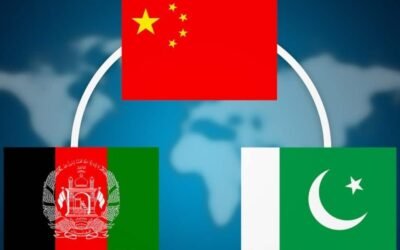The Chinese Yuan, or renminbi, is rising in global finance. In 2016, the IMF added it to the Special Drawing Rights basket. This gave the yuan global credibility. It showed recognition of China’s growing power. Since then, Beijing has pushed hard for the internationalization of Yuan use. It set up offshore clearing banks in 27 countries, including Pakistan. These banks make transactions smoother. China also built a cross-border payment system. This reduced reliance on the dollar-based SWIFT network. Swap agreements were signed with dozens of states. These deals allow local currencies to exchange directly with the yuan. Together, these steps show a clear plan. China wants the yuan to be trusted worldwide. It also aims to cut dependence on the U.S. dollar.
You May Like To Read: Govt Cuts Diesel Prices, Petrol Unchanged for Next Fortnight
Pakistan’s Shift Toward Yuan for Trade, Stability, and Stronger Ties with China
Pakistan has already moved toward this shift. In 2018, the State Bank allowed the yuan to be used like the dollar, euro, and yen. This applied to trade and investment deals. Officials called it a “great historical step.” They said it would ease China-Pakistan trade. It would also lower pressure on dollar reserves. In practice, Pakistani importers can pay Chinese suppliers in yuan. Chinese investors under CPEC can use yuan financing. They can also send profits back in yuan. This makes transactions faster and simpler. It also deepens financial ties with China.

Source: Arab News
This shift matters because China is a giant in the world economy. Its GDP is about 70% the size of the U.S. economy. Yet the yuan makes up only 2-3% of global reserves. This shows the currency still has a long way to go. Recent reports say many central banks have even cut their yuan holdings. This shows most reserve managers remain cautious. The reasons are clear. China has capital controls. The yuan is not fully convertible. Its financial system lacks transparency.
For Pakistan, the picture is different. China is its largest trade and investment partner. Billions flow into CPEC projects. Using yuan instead of dollars makes these flows cheaper and safer. The State Bank has been urged to add yuan to its reserves. It would reduce Pakistan’s reliance on the U.S. dollar. It could also stabilize the rupee. The benefits are practical. Yuan reserves let Pakistan pay China without dollar conversion. They help Chinese firms send profits home more easily. They also lower pressure on Pakistan’s dollar reserves. As China’s Belt and Road grows, the case for yuan reserves gets stronger. For Pakistan, adopting the yuan early means protection against dollar shocks. It also means closer alignment with its main economic partner.
China Expands Yuan Use in Pakistan’s Trade and Finance
China has taken clear steps to expand its use in Pakistan. Along with setting up a clearing bank, it offered a bilateral swap line to Islamabad. In 2025, Pakistan requested an increase in this swap line from 30 billion yuan to 40 billion. The government is also preparing to launch its first “Panda” bond by the end of the year. This bond will be yuan-denominated and issued in China’s domestic market. These measures give Pakistan more room to borrow in yuan and settle trade without relying on dollars. They also create new financing channels for projects tied to CPEC.
If Chinese investors in CPEC projects can settle accounts in yuan, the strain on Pakistan’s dollar reserves will ease. This makes external financing more sustainable. It also reduces risks from dollar shortages. Together, these moves show how Pakistan is building tools to shift part of its economy toward yuan-based trade and investment.

Source: Reuters
Yuan as a Hedge for Pakistan: Opportunities and Limits
In practice, a larger yuan in reserves acts as a hedge. Pakistan’s reserves are almost fully in dollars and euros. Any shock to these currencies, like a U.S. interest-rate hike or sanctions, puts heavy pressure on the rupee. If even 10-20% of reserves were in yuan, the impact of a dollar crisis would be smaller. A study in the Lahore Journal points out that more renminbi reserves could “help minimize the fluctuations in the Pakistani rupee” against key currencies. In short, keeping a yuan buffer gives Islamabad room to breathe during dollar shortages and reduces sudden shocks to the economy.
Of course, challenges remain. China’s financial markets are still less open and smaller than those of the U.S. or the EU. Yields on Chinese government bonds are often lower than similar foreign bonds, so many reserve managers see limited returns. Strict capital controls further restrict flexibility. Geopolitical risks also cast doubt on the yuan’s appeal. For Pakistan, careful steps are needed. It cannot take large speculative positions. The aim is not to replace the dollar at once. The smarter path is gradual diversification, using the yuan to balance risk without overexposure.
Conclusion
China’s currency is gaining strength, and Pakistan is well placed to take advantage. By slowly adding yuan to its reserves, Islamabad can cut reliance on a single currency. Exporters could be encouraged to price part of their contracts in yuan. New infrastructure loans could also be financed in renminbi. These steps would naturally grow Pakistan’s yuan reserves over time. Finance Minister Aurangzeb made the point clear when he said the goal is “to get to 40 billion renminbi,” showing the push to widen funding options. If used with care, the yuan gives Pakistan an added tool for stability. It also provides flexibility in managing future shocks to its forex strategy.
You May Like To Read: Chinese FM Wang Yi in Islamabad for Sixth Round of Strategic Dialogue







